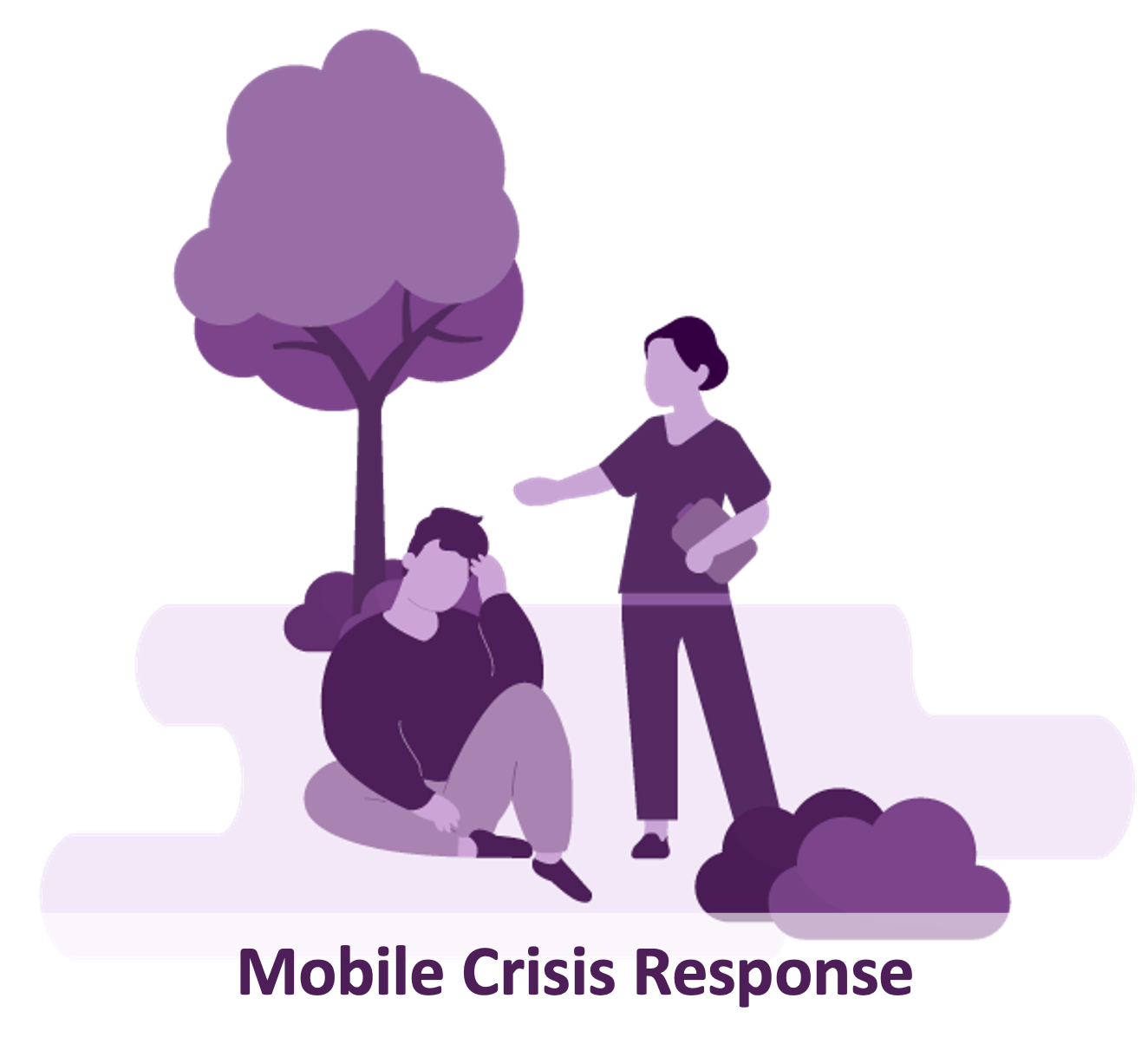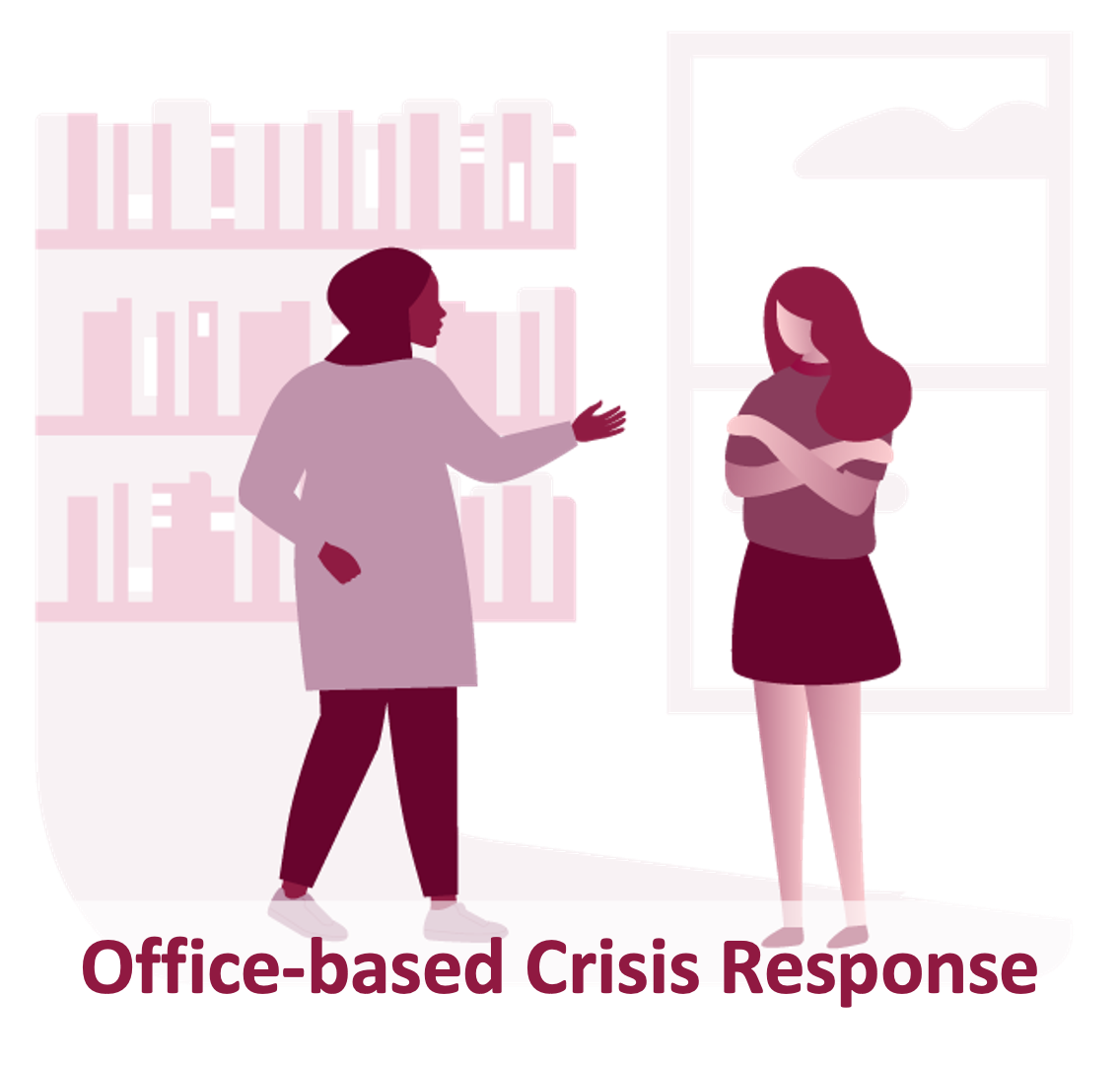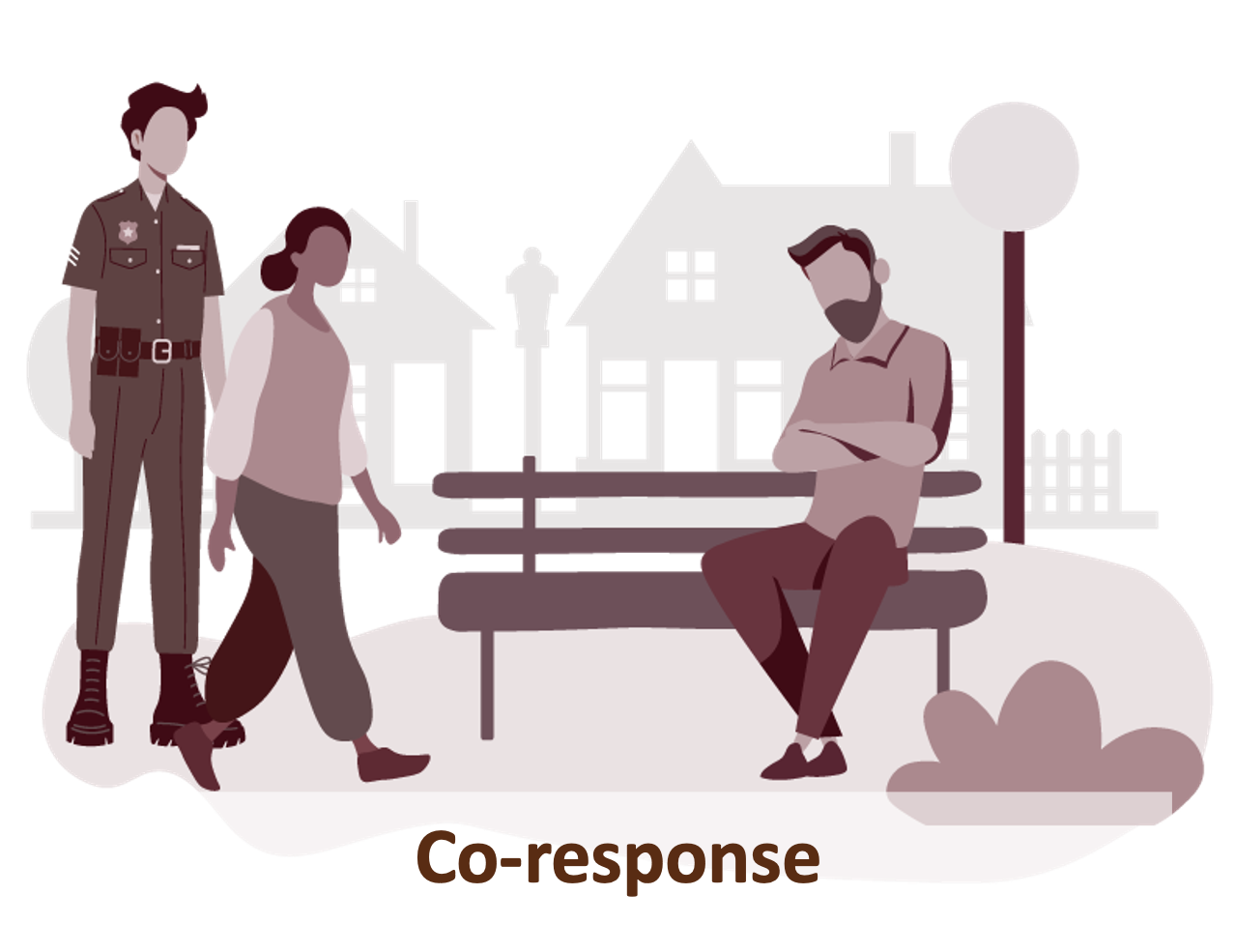Responding to a mental health crisis in the community can increase care, CBHJ study finds
In the wake of growing concern and attention to how law enforcement encounter individuals in crisis, various alternative response models have been explored across the United States. Although reports continue to emerge regarding various model types, little attention has been given to what happens to those in crisis after encountering the various response models that exist today.
To address this gap, the Center for Behavioral Health and Justice at the Wayne State University School of Social Work (CBHJ) conducted a study into five crisis response programs  across Michigan. The results suggest that alternative responses connected more people in crisis to ongoing care outside of emergency departments compared to law enforcement responses. Emergency departments have historically struggled with connecting people to ongoing mental health and substance use treatment, and many law enforcement departments are not equipped to adequately deal with mental health crisis. Involving clinical teams in the community can prevent expensive emergency department care and get people connected to mental healthcare after the crisis incident is resolved.
across Michigan. The results suggest that alternative responses connected more people in crisis to ongoing care outside of emergency departments compared to law enforcement responses. Emergency departments have historically struggled with connecting people to ongoing mental health and substance use treatment, and many law enforcement departments are not equipped to adequately deal with mental health crisis. Involving clinical teams in the community can prevent expensive emergency department care and get people connected to mental healthcare after the crisis incident is resolved.
 The study, supported by the Mental Health Diversion Council, looked at multiple crisis response programs provided by CBHJ community partners across Michigan. The office-based response program provided crisis services in community mental health offices. Three mobile crisis programs were studied, where mobile crisis teams performed assessments and treatment at people’s home or in the community. Finally, two co-response programs provided crisis services by sending clinicians to law enforcement requests for service.
The study, supported by the Mental Health Diversion Council, looked at multiple crisis response programs provided by CBHJ community partners across Michigan. The office-based response program provided crisis services in community mental health offices. Three mobile crisis programs were studied, where mobile crisis teams performed assessments and treatment at people’s home or in the community. Finally, two co-response programs provided crisis services by sending clinicians to law enforcement requests for service.

The study did not control for source or intensity of the crises, but found patterns around who responds to the crisis and where the crisis was resolved. Mobile crisis teams only sent 23% of those they encountered to the emergency department, compared to 70% of traditional law enforcement cases, 43% of co-response cases, and 25% of office-based response cases. Additionally, 73% of the office-based and mobile crisis responses were resolved informally (no transport, or taken to family/friends/home), while law enforcement resolved only about one quarter of their cases informally.
Implementing and practicing crisis response models present serious challenges for Michigan’s communities that cannot be overlooked. In a series of interviews, the CBHJ found that crisis response professionals had serious concerns about staffing, among other things. “Our challenges, you know, [are] the teams that go out for this co-response, are the same teams that are responding to all 17 emergency departments and adult foster care homes in the county,” said one interviewee. “So we haven’t really had the funding to staff.”
There is not a one-size-fits-all solution to crisis response. Each Michigan community has its own unique historical, cultural, and social dynamic, and recognizing this can be one important step to better understanding how to effectively implement the best crisis-response model.
“You know, we’re just really lucky”, said one interviewee about receiving support from a county millage. “I think it has to do with the fact that we’re doing something innovative [that] we’ve gotten this millage funding, which has made the news multiple times, and then we have multiple schools who are just local. And we have a community that is just excited about this co-response with other people.”
Though many alternative models to crisis response are being proposed and implemented, there is still much work that needs to be done to provide adequate help for all Michiganders in crisis. Not all communities in Michigan have models like mobile crisis or co-response, and the predominate response to mental health crises is law enforcement across most of the United States. To expand the use of clinician-involved response models, communities need support from the general public to spur funding, staffing, and technical assistance to implement these complex, interdisciplinary system changes.
About the Center for Behavioral Health and Justice: The Wayne State University School of Social Work Center for Behavioral Health and envisions communities in which research, data, and best practices are used by multiple stakeholders to enhance the optimal well-being of individuals with mental illness and/or substance use disorders who come into contact with the criminal/legal system. Learn more
About the Mental Health Diversion Council: Created by Executive Order 2013-7, the Mental Health Diversion Council was created in the Michigan Department of Community Health to advise and assist in the implantation of the Diversion Action Plan and provide recommendations for statutory, contractual or procedural changes to improve diversion. The Council is charged with “reducing the number of people with mental illness or intellectual or developmental disabilities (including comorbid substance addiction) from entering the corrections system, while maintaining public safety”. Learn more.